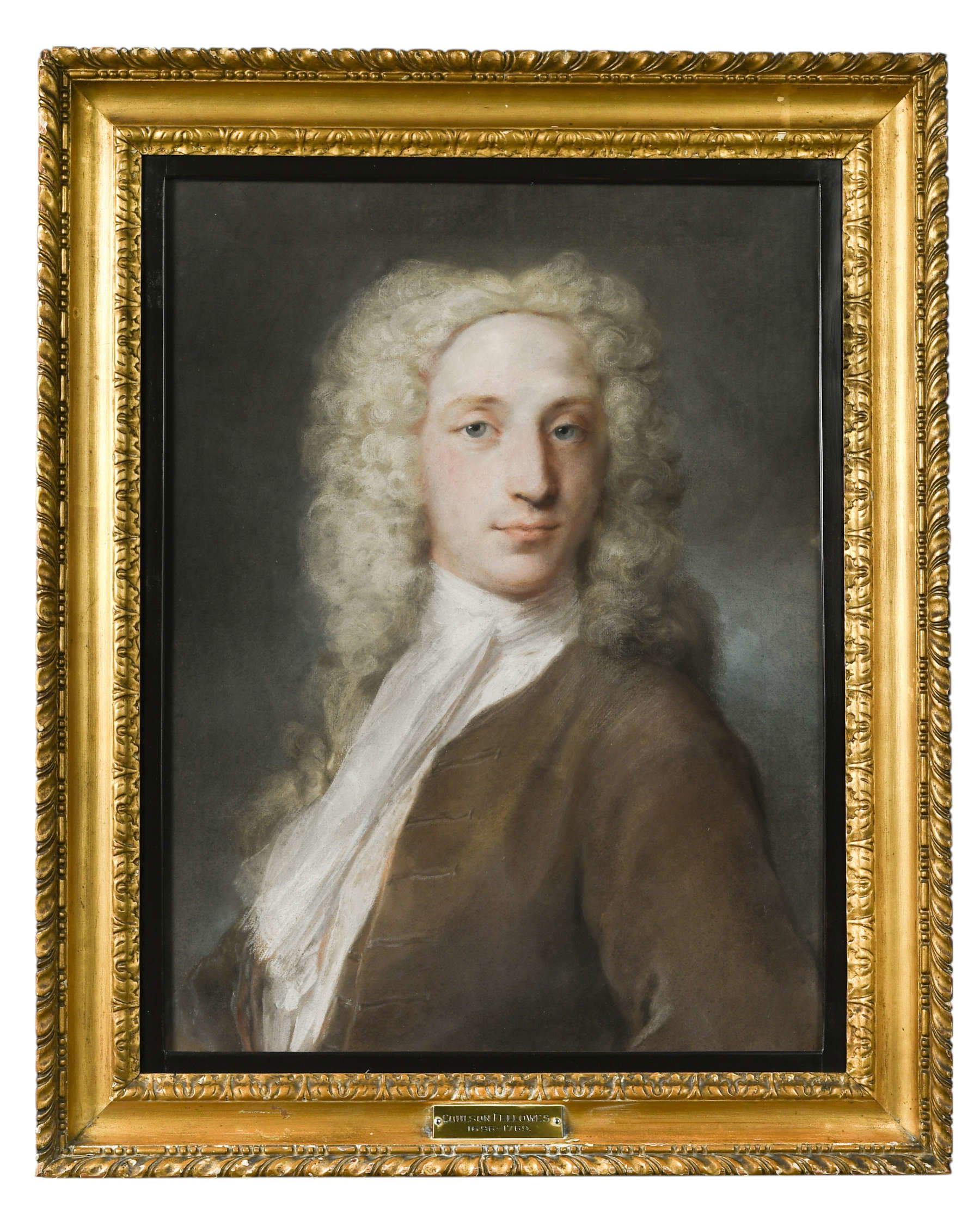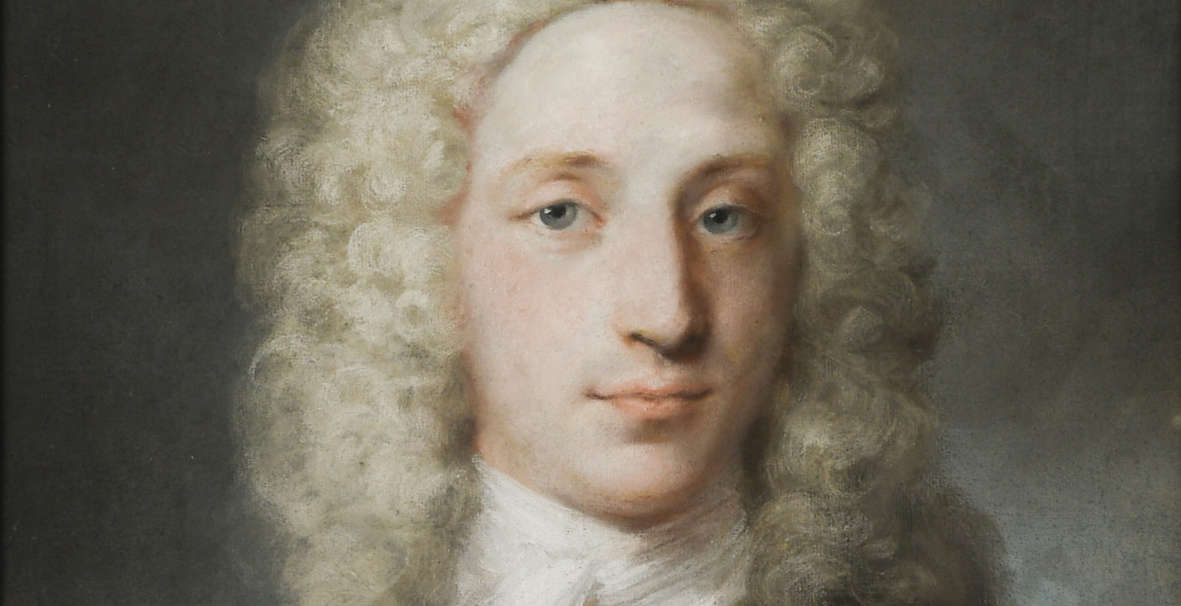An unpublished painting by Rosalba Carriera (Venice, 1673 - 1757) that never left the family circle for more than three centuries is now being presented to the public and the market for the first time. It is a pastel portrait of Coulson Fellowes, an 18th-century English parliamentarian, made by the Venetian painter in 1724. The work will be auctioned at Cheffins in Cambridge on Sept. 17 as part of The Fine Sale, with an estimate of between 15,000 and 25,000 pounds (17-29,000 euros), and carries with it a story that intertwines art, travel, politics and collecting.
The painting, measuring 54.5 x 41 centimeters, depicts a half-length portrait of the young Fellowes, who was then in Italy on his Grand Tour, the educational journey that aristocrats and members of the most influential families made through Europe. Its execution is documented in the diary of Carriera herself, who noted the young Englishman’s visit to her Venetian studio. The portrait has remained the Fellowes’ property ever since, passing from generation to generation, and is today a rare testimony to the fortune the artist was able to win among British travelers.
Coulson Fellowes, born in 1696, was the son of jurist William Fellowes of Eggesford, Devon. When his father died in 1725, he inherited Eggesford Manor, consolidating his position as a major landowner. His political career developed in the following years, when, from 1741 to 1761, he was MP for the Huntingdonshire constituency. In 1737 he acquired Ramsey Abbey, a historic mansion that added to the family fortune. Among his philanthropic activities he is also remembered for being among the principal benefactors of Addenbrooke’s Hospital, the hospital founded by physician John Addenbrooke in Cambridge, to which he contributed significant donations. After having been kept for a long time at Shotesham Park, the family’s residence in Norfolk, and after the sale of the property in 1979, the portrait nevertheless remained in the possession of the descendants, until the decision was made to offer it now for the first time on the market.
Rosalba Carriera was one of the most innovative and sought-after artists of her time. Famous for her use of pastel, a technique she helped make fashionable in European salons, she portrayed sovereigns, aristocrats and intellectuals. His patrons included such names as Louis XV of France, the writer Horace Walpole and the painter Antoine Watteau. His fame was especially consolidated after his stay in Paris between 1719 and 1720, when, as a guest of the collector Pierre Crozat, he had the opportunity to engage with artists such as Rigaud and Largillière. There she came into contact with the French aristocracy and the court, which welcomed her enthusiastically, establishing her as one of the leading figures in Rococo portraiture.

In the early 1720s, Carriera became a point of reference for English travelers passing through Venice. Numerous young aristocrats returning from the Grand Tour carried a portrait of him with them, contributing to the spread of his work in Britain. In a 1721 letter addressed to Nicolas Vleughels, director of the French Academy in Rome, the painter ironically noted that she had been “assailed by the English.” Beginning in 1723, her diary also records commissions from Joseph Smith, British consul in Venice and a major patron, who most likely played a role in introducing Coulson Fellowes to the artist.
The pastel that now goes up for auction is thus the fruit of an encounter made possible by the cultural and diplomatic networks that fueled the Grand Tour, as well as by Carriera’s position as a privileged interpreter of international taste. The spontaneity and intimacy of his stroke, combined with the freshness of his pastel technique, knew how to capture and render a direct image of the protagonists of the time, in contrast to the formality of much official portraiture.
Highlighting the importance of this find is Luke Bodalbhai, painting specialist at Cheffins, who calls the work “an elegant example of Rosalba’s portraiture innovation, capable of expressing immediacy and intimacy and propelling the artist to international fame in the early decades of the 18th century.” The expert also highlights the close relationship with Watteau, who influenced her adherence to a typically Rococo spirit, perfectly adapted to the pastel technique. The painting thus represents not only a document of an artist’s career, but also a piece of the broader cultural dialogue that characterized 18th-century Europe.
Today Rosalba Carriera’s works are held in some of the world’s leading museums, from the Louvre to the National Gallery in London to the Frick Collection in New York. The Coulson Fellowes portrait thus presents itself as a major opportunity for both private collectors and museum institutions interested in enriching their collections of 18th-century paintings.
The return to light of this painting is not only a market event, but also an opportunity to reread the work of one of the protagonists of European art history. Rosalba Carriera, with her ability to make her way in an environment dominated by men, with her style that combined grace and immediacy, with her mastery of the pastel technique, imposed herself as a unique and recognizable voice, capable of dialoguing with the highest artistic expressions of her time.
 |
| Precious portrait of Rosalba Carriera resurfaces after 300 years and goes to auction in England |
Warning: the translation into English of the original Italian article was created using automatic tools. We undertake to review all articles, but we do not guarantee the total absence of inaccuracies in the translation due to the program. You can find the original by clicking on the ITA button. If you find any mistake,please contact us.